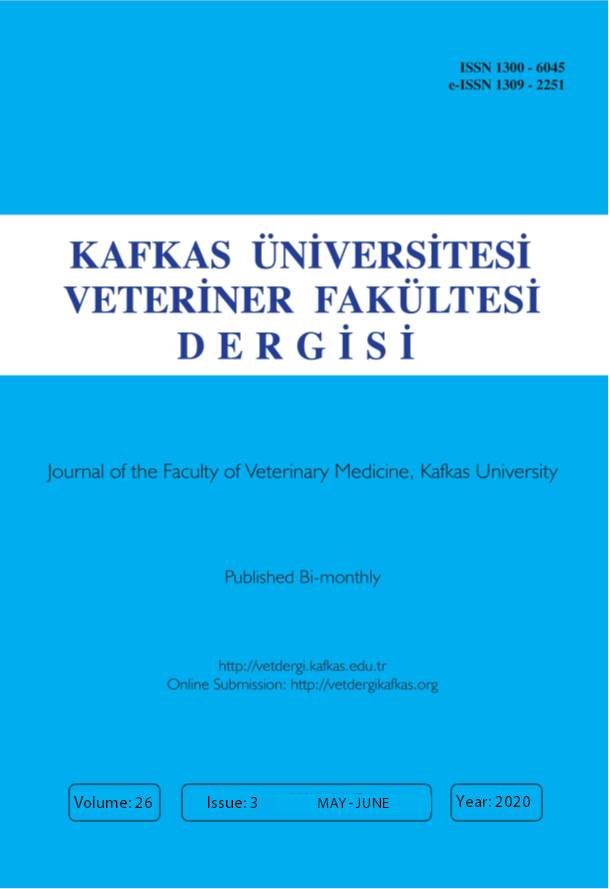
This journal is licensed under a Creative Commons Attribution-NonCommercial 4.0 International License
Kafkas Üniversitesi Veteriner Fakültesi Dergisi
2020 , Vol 26 , Issue 3
Phylogenetic Grouping and Antimicrobial Resistance Profiles of Escherichia coli Isolated from Calves in Xinjiang, China
1College of Animal Science and Technology, Shihezi University, Shihezi, Xinjiang, 832003, CHINA2State Key Laboratory for Sheep Genetic Improvement and Healthy Production, Xinjiang Academy of Agricultural and Reclamation Science, Shihezi, Xinjiang, 832000, CHINA
3College of Animal Science and Technology, Tarim University, Alar, Xinjiang, 843300, CHINA
4College of Animal Science and Technology, Xinjiang Agricultural Vocational and Technical College, Changji, Xinjiang, 31100, CHINA DOI : 10.9775/kvfd.2019.23046 The widespread multidrug-resistant Escherichia coli strains have caused a severe challenge to animal health and the development of breeding industries. The purpose of this study was to investigate the phylogenetic grouping and antimicrobial resistance profiles of E. coli isolated from diarrheic calves in Xinjiang province, China. In this study, a total of 379 E. coli strains were isolated from 379 rectal swab samples of diarrheic calves. They were further analyzed their phylogenetic groupings by multiplex PCR, and were clustered into four phylogenetic groups, A (36.1%), B1 (17.4%), B2 (15.6%), and D (30.9%). All E. coli isolates were tested for their susceptibility to 15 antimicrobial agents by Kirby-Bauer (KB) method. The isolates showed the highest resistance rates against ampicillin (64.9%), followed by streptomycin (59.4%), tetracycline (53.8%), sulfamethoxazole/ trimethoprim (50.9%), chloramphenicol (45.6%), kanamycin (44.1%) and enrofloxacin (42.0%). E. coli isolates exhibited lower resistance to ceftazidime (15.0%) and polymyxin (12.6%). The resistance genes blaTEM, blaOXA, mcr-1, strA-strB, aadA, tet(A), tet(B), and tet(C) were detected in 68.3% (168/246), 27.2% (67/246), 14.6% (7/48), 51.1% (115/225), 24.9% (56/225), 51.5% (105/204), 44.6% (91/204), and 7.8% (16/204) of E. coli isolates, respectively. These results demonstrate that prevalent multi-drug resistance and high level of antimicrobial resistance genes exist among E. coli from Xinjiang diarrheic calves and pose a potential public health concern. Keywords : Escherichia coli, Phylogenetic grouping, Antimicrobial resistance, Resistance genes, Calf










